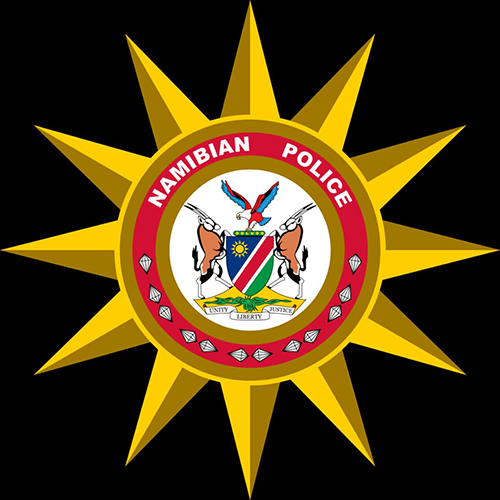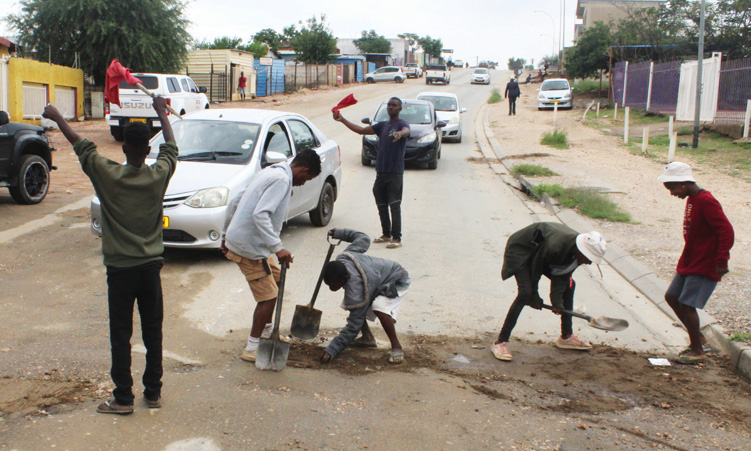THE Sperrgebiet, an area of 2,6 million hectares stretching from Aus to Sendelingsdrift and Luederitz to Oranjemund, is the only arid biodiversity hotspot and this makes it a very special area.
This was said by Morgan Hauptfleisch, a scientist at the Southern African Institute for Environmental Assessment, who last year did a study to determine the key indicators for monitoring the Sperrgebiet, which is also home to a number of Namdeb diamond mines. Hauptfleisch said the Sperrgebiet has the highest diversity of succulent plants in the world, with about 2 000 endemic species in its vegetation biome known as the Succulent Karoo.He said the ecology of the Sperrgebiet is also special because it has plants and animals that are highly adapted and it is characterised by inselbergs, high winds (summer from the south, winter from the east) and summer and winter rains.Hauptfleisch last Wednesday held a presentation in Windhoek, entitled ‘The Flagships of the Sperrgebiet – An Ecological Voyage’, that was organised by the Namibia Environmental Society.He said a number of activities were being planned for the area, which has had restricted access since 1908, due to alluvial diamond deposits.He said a management plan for the area – due to be proclaimed a National Park – has been developed, a tourism development plan is being formulated, mining activities will be allowed to continue while limited tourism will be allowed in it.Hauptfleisch said for the Sperrgebiet to be utilised sustainably, efforts to do so have to be monitored.”You can’t manage what you can’t measure,” he said.He said plants, animals, law enforcement, research, tourism, mining, roads, fences and water will have to be monitored.This will help determine whether the vision of the new Sperrgebiet National Park is realised, which is “to protect and sustainably manage the integrity, stability, diversity and beauty of the biota and landscapes of the Sperrgebiet National Park, within the context of the greater Succulent Karoo, Nama Karoo, Namib and Coastal Ecosystems and to strategically develop the area to enhance conservation and socio-economic values for the region and nation”.At the moment, said Hauptfleisch, problems facing the Sperrgebiet are illegal collections of very important plant species, road construction and infrastructure development through tourism.He said the Sperrgebiet is still relatively unknown and there is a need for more research.An earlier study done by environmental consultant Antje Burke found that climate change was a threat to all types of vegetation in the Sperrgebiet area, as the Succulent Karoo plant kingdom is expected to be severely affected.Burke said the declining populations of key species, such as the stem-succulent aloe dichotoma, are a convincing indication of these impacts.Hauptfleisch said the Sperrgebiet has the highest diversity of succulent plants in the world, with about 2 000 endemic species in its vegetation biome known as the Succulent Karoo.He said the ecology of the Sperrgebiet is also special because it has plants and animals that are highly adapted and it is characterised by inselbergs, high winds (summer from the south, winter from the east) and summer and winter rains.Hauptfleisch last Wednesday held a presentation in Windhoek, entitled ‘The Flagships of the Sperrgebiet – An Ecological Voyage’, that was organised by the Namibia Environmental Society.He said a number of activities were being planned for the area, which has had restricted access since 1908, due to alluvial diamond deposits.He said a management plan for the area – due to be proclaimed a National Park – has been developed, a tourism development plan is being formulated, mining activities will be allowed to continue while limited tourism will be allowed in it.Hauptfleisch said for the Sperrgebiet to be utilised sustainably, efforts to do so have to be monitored.”You can’t manage what you can’t measure,” he said.He said plants, animals, law enforcement, research, tourism, mining, roads, fences and water will have to be monitored.This will help determine whether the vision of the new Sperrgebiet National Park is realised, which is “to protect and sustainably manage the integrity, stability, diversity and beauty of the biota and landscapes of the Sperrgebiet National Park, within the context of the greater Succulent Karoo, Nama Karoo, Namib and Coastal Ecosystems and to strategically develop the area to enhance conservation and socio-economic values for the region and nation”.At the moment, said Hauptfleisch, problems facing the Sperrgebiet are illegal collections of very important plant species, road construction and infrastructure development through tourism.He said the Sperrgebiet is still relatively unknown and there is a need for more research.An earlier study done by environmental consultant Antje Burke found that climate change was a threat to all types of vegetation in the Sperrgebiet area, as the Succulent Karoo plant kingdom is expected to be severely affected.Burke said the declining populations of key species, such as the stem-succulent aloe dichotoma, are a convincing indication of these impacts.
Stay informed with The Namibian – your source for credible journalism. Get in-depth reporting and opinions for
only N$85 a month. Invest in journalism, invest in democracy –
Subscribe Now!










